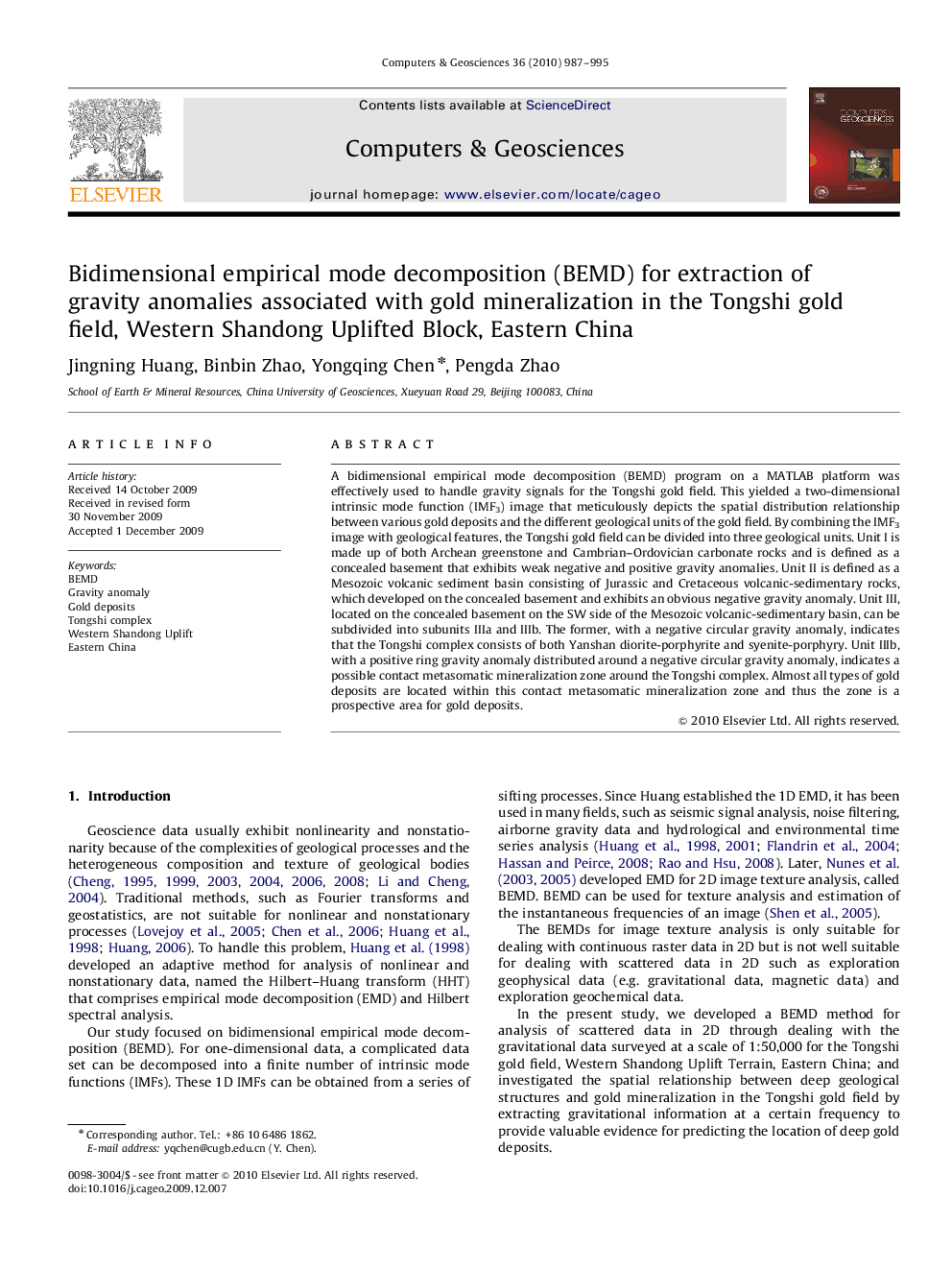| Article ID | Journal | Published Year | Pages | File Type |
|---|---|---|---|---|
| 508168 | Computers & Geosciences | 2010 | 9 Pages |
A bidimensional empirical mode decomposition (BEMD) program on a MATLAB platform was effectively used to handle gravity signals for the Tongshi gold field. This yielded a two-dimensional intrinsic mode function (IMF3) image that meticulously depicts the spatial distribution relationship between various gold deposits and the different geological units of the gold field. By combining the IMF3 image with geological features, the Tongshi gold field can be divided into three geological units. Unit I is made up of both Archean greenstone and Cambrian–Ordovician carbonate rocks and is defined as a concealed basement that exhibits weak negative and positive gravity anomalies. Unit II is defined as a Mesozoic volcanic sediment basin consisting of Jurassic and Cretaceous volcanic-sedimentary rocks, which developed on the concealed basement and exhibits an obvious negative gravity anomaly. Unit III, located on the concealed basement on the SW side of the Mesozoic volcanic-sedimentary basin, can be subdivided into subunits IIIa and IIIb. The former, with a negative circular gravity anomaly, indicates that the Tongshi complex consists of both Yanshan diorite-porphyrite and syenite-porphyry. Unit IIIb, with a positive ring gravity anomaly distributed around a negative circular gravity anomaly, indicates a possible contact metasomatic mineralization zone around the Tongshi complex. Almost all types of gold deposits are located within this contact metasomatic mineralization zone and thus the zone is a prospective area for gold deposits.
